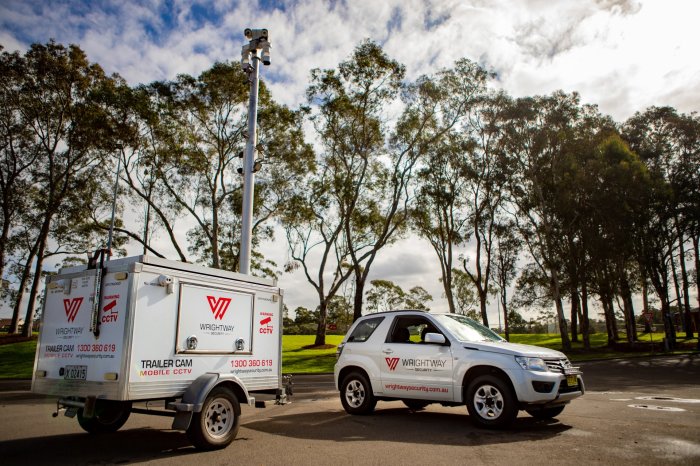Smart surveillance system is revolutionizing the way we monitor and secure our environments. By integrating advanced technologies such as artificial intelligence and the Internet of Things, these systems offer unprecedented capabilities that traditional surveillance methods simply cannot match. This evolution not only enhances security but also brings efficiency and cost-effectiveness across various sectors, paving the way for smarter urban spaces and safer communities.
As we delve into the intricacies of smart surveillance systems, we will explore their fundamental components, the significant advantages they present, and the technological innovations driving their development. This comprehensive overview will illuminate how smart surveillance is not just a trend, but a strategic necessity in today’s rapidly evolving landscape.
Overview of Smart Surveillance Systems
Smart surveillance systems represent a significant evolution in the field of security and monitoring. These systems integrate advanced technologies to provide enhanced capabilities compared to traditional surveillance methods. At their core, smart surveillance systems utilize a combination of cameras, sensors, and software to collect and analyze data in real-time, facilitating better security measures and operational efficiency.
The evolution of surveillance technology has come a long way from basic closed-circuit television (CCTV) systems to sophisticated smart surveillance setups. Early surveillance methods focused primarily on video capture, with limited capabilities for analysis or integration. However, advancements in technology, including the advent of artificial intelligence (AI) and Internet of Things (IoT) devices, have transformed these systems into intelligent solutions that can predict and respond to security threats dynamically.
Key features that distinguish smart surveillance systems from traditional systems include:
- Real-time analytics and processing capabilities
- Enhanced storage and retrieval options through cloud technology
- Integration with other security systems for comprehensive coverage
- Automated alerts and reporting for faster response times
Benefits of Implementing Smart Surveillance

Implementing smart surveillance systems offers numerous advantages across various sectors, from urban environments to private businesses. These benefits not only enhance security but also streamline operations, proving vital in today’s fast-paced world.
The advantages of smart surveillance systems include:
- Improved security through advanced threat detection and response
- Enhanced monitoring capabilities that provide a comprehensive view of environments
- Cost-effectiveness over time compared to traditional systems, notably through lower staffing needs and reduced incidents
For example, smart surveillance in urban areas has led to quicker police response times, while businesses report reduced theft and enhanced customer safety due to real-time monitoring.
Technologies Used in Smart Surveillance

Smart surveillance systems leverage cutting-edge technologies to operate effectively. The integration of AI and machine learning plays a crucial role in enhancing the capabilities of these systems. AI algorithms analyze video feeds to detect unusual activities and distinguish between different types of behavior, significantly improving security outcomes.
IoT devices contribute to the functionality of smart surveillance by enabling seamless communication between various components of the system. Sensors can trigger alerts based on specific thresholds, such as motion detection, while cameras can provide real-time video feeds accessible remotely.
Moreover, big data and analytics empower smart surveillance solutions to store and process vast amounts of information. Insights gained from this data can inform security strategies and operational decisions, ensuring a proactive rather than reactive approach to security management.
Privacy and Ethical Considerations
The deployment of smart surveillance systems raises significant privacy concerns. Individuals may feel their privacy is compromised due to constant monitoring, leading to discussions around the ethical implications of such technologies on communities and personal freedoms.
Ethical considerations involve balancing the need for security with respect for individual privacy rights. Regulatory frameworks governing smart surveillance technology are evolving to address these issues, ensuring that surveillance practices are conducted transparently and responsibly.
Case Studies of Smart Surveillance Implementation

Numerous cities and industries have successfully implemented smart surveillance systems, yielding impressive results. For instance, cities like London and New York have integrated smart surveillance into their public safety strategies, resulting in reduced crime rates and enhanced emergency response capabilities.
In the retail sector, smart surveillance has transformed loss prevention strategies. Stores now employ smart cameras that analyze foot traffic and customer behavior, enabling them to optimize layouts and staffing effectively.
| Case Study | Industry | Outcome |
|---|---|---|
| London Smart City Project | Urban Safety | 20% reduction in crime rates |
| Walmart Smart Surveillance | Retail | Improved loss prevention and customer safety |
| Singapore Smart Nation Initiative | Public Safety | Enhanced emergency response efficiency |
Challenges and Limitations, Smart surveillance system
Despite the numerous benefits, implementing smart surveillance systems comes with its challenges. Technical difficulties, such as ensuring system compatibility and maintaining software updates, can hinder effective deployment.
There are limitations regarding data storage and processing capabilities, as smart surveillance generates vast amounts of information that must be managed efficiently. Furthermore, public perception poses a challenge, with some communities expressing resistance to surveillance technologies due to privacy concerns.
Future Trends in Smart Surveillance
The future of smart surveillance is poised for significant advancements driven by ongoing innovations in technology. Emerging trends indicate a shift towards more intuitive systems that utilize enhanced AI and advanced sensors to improve functionality and reliability.
As AI algorithms become more sophisticated, smart surveillance will likely evolve to include predictive analytics that enhance crime prevention strategies. Additionally, the integration of biometric technologies such as facial recognition could reshape how security measures are implemented, raising further discussions on privacy and ethical considerations.
Overall, the role of smart surveillance in fostering safer communities and enhancing public safety is expected to grow, making it a pivotal aspect of modern security solutions.
Final Summary: Smart Surveillance System
In conclusion, the implementation of a smart surveillance system is reshaping our approach to security and monitoring. While it offers numerous benefits—including enhanced safety, efficiency, and cost savings—it also raises important ethical and privacy considerations that must be addressed. As technology continues to advance, the future of smart surveillance holds great promise for improving public safety and reshaping our urban environments.
